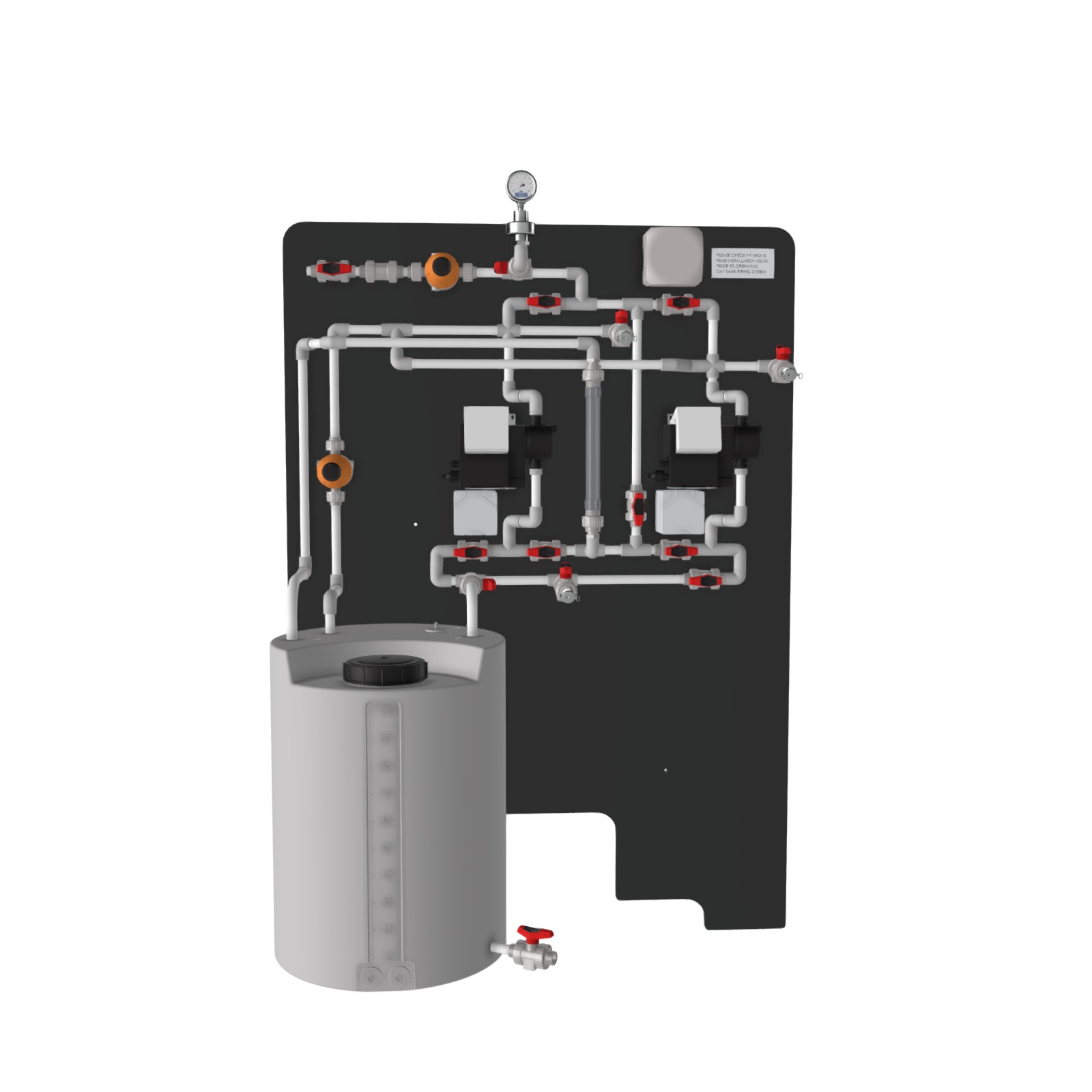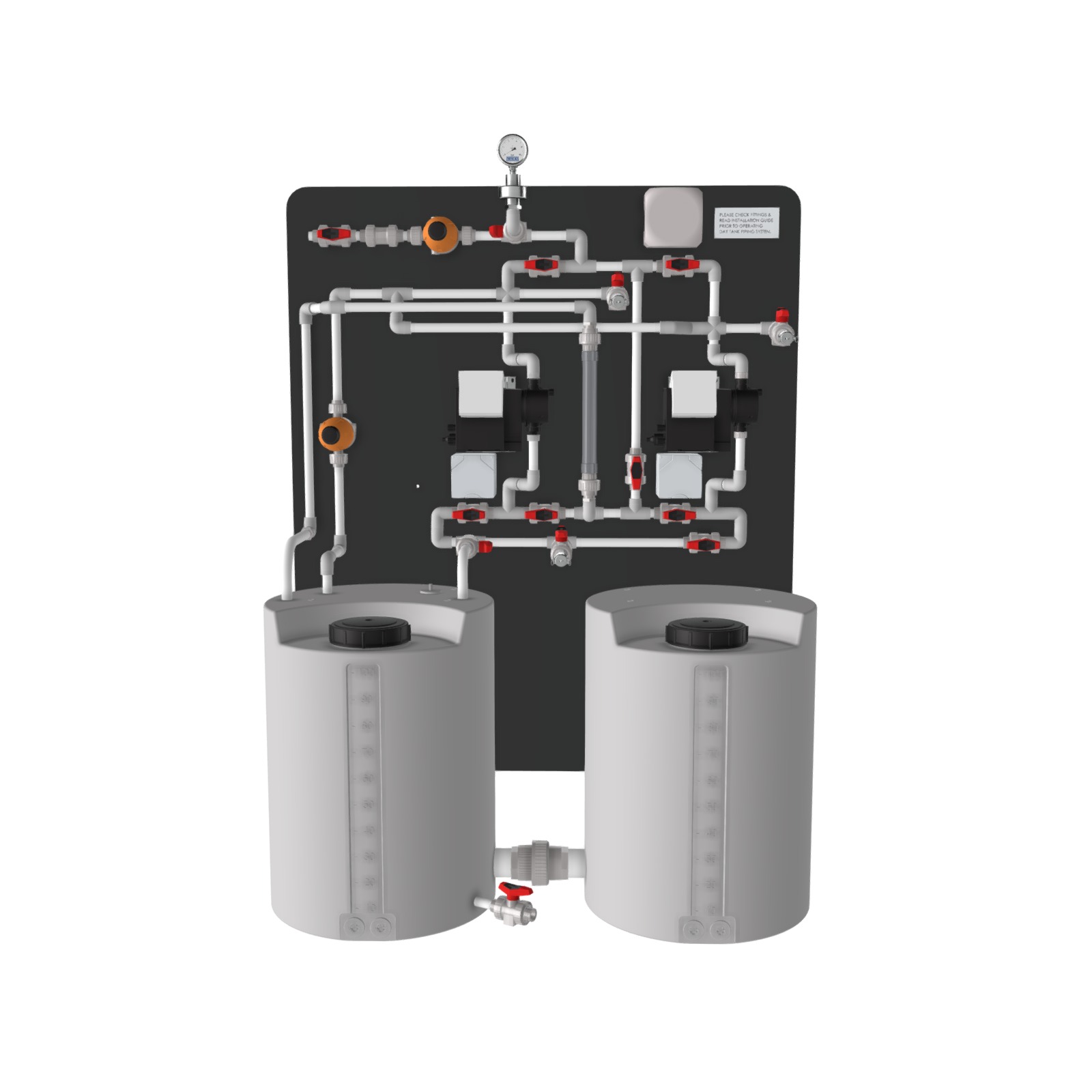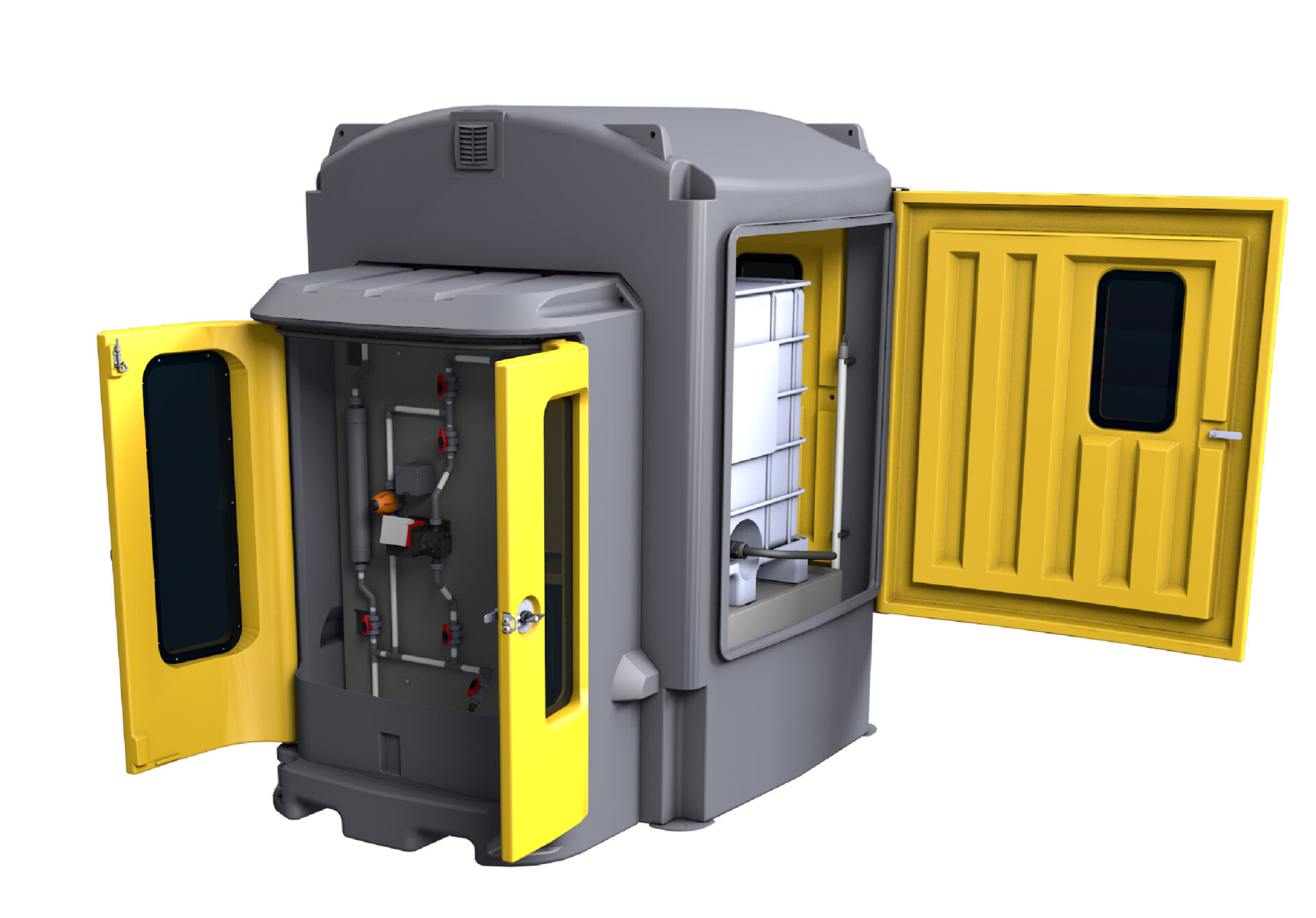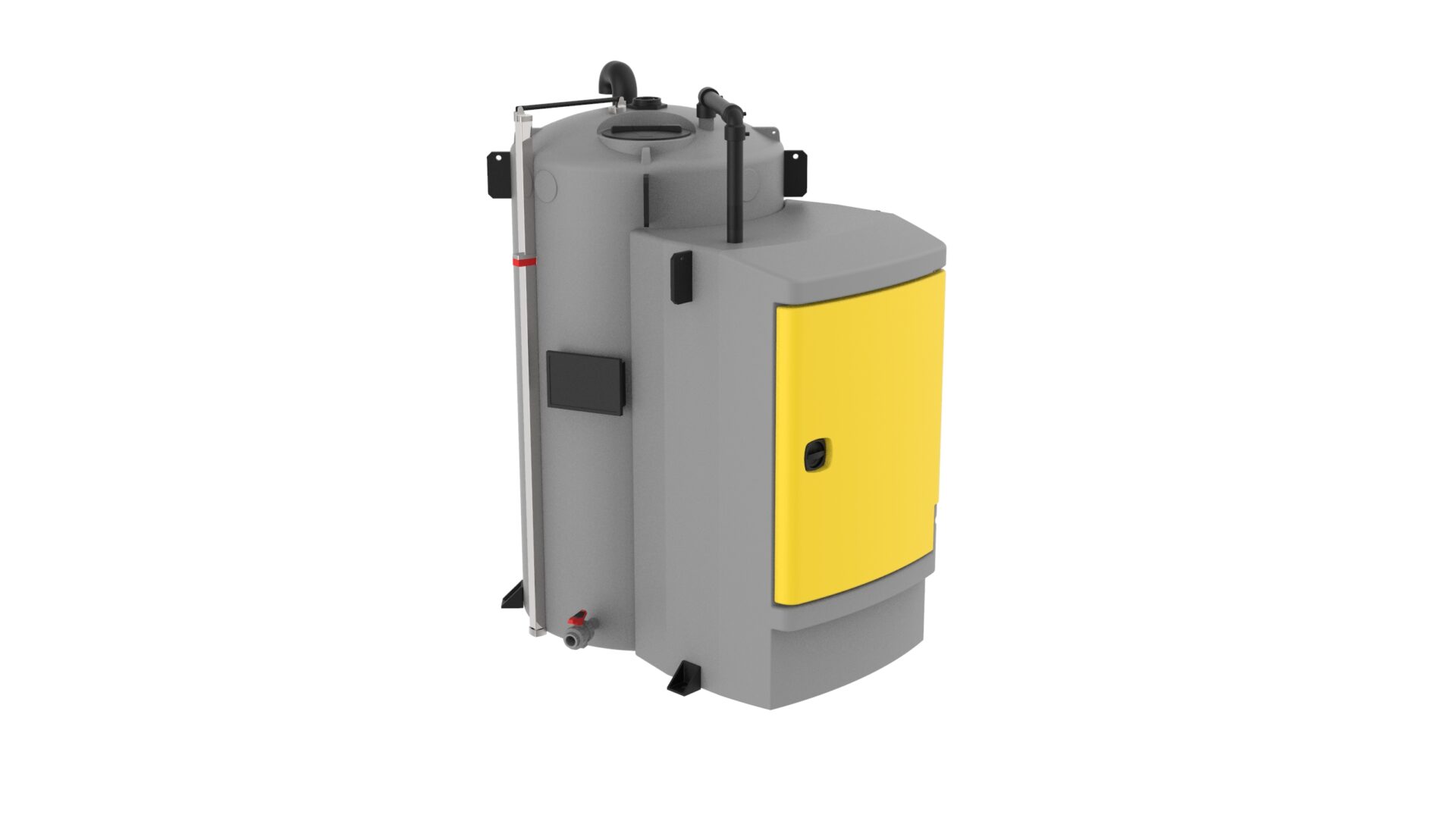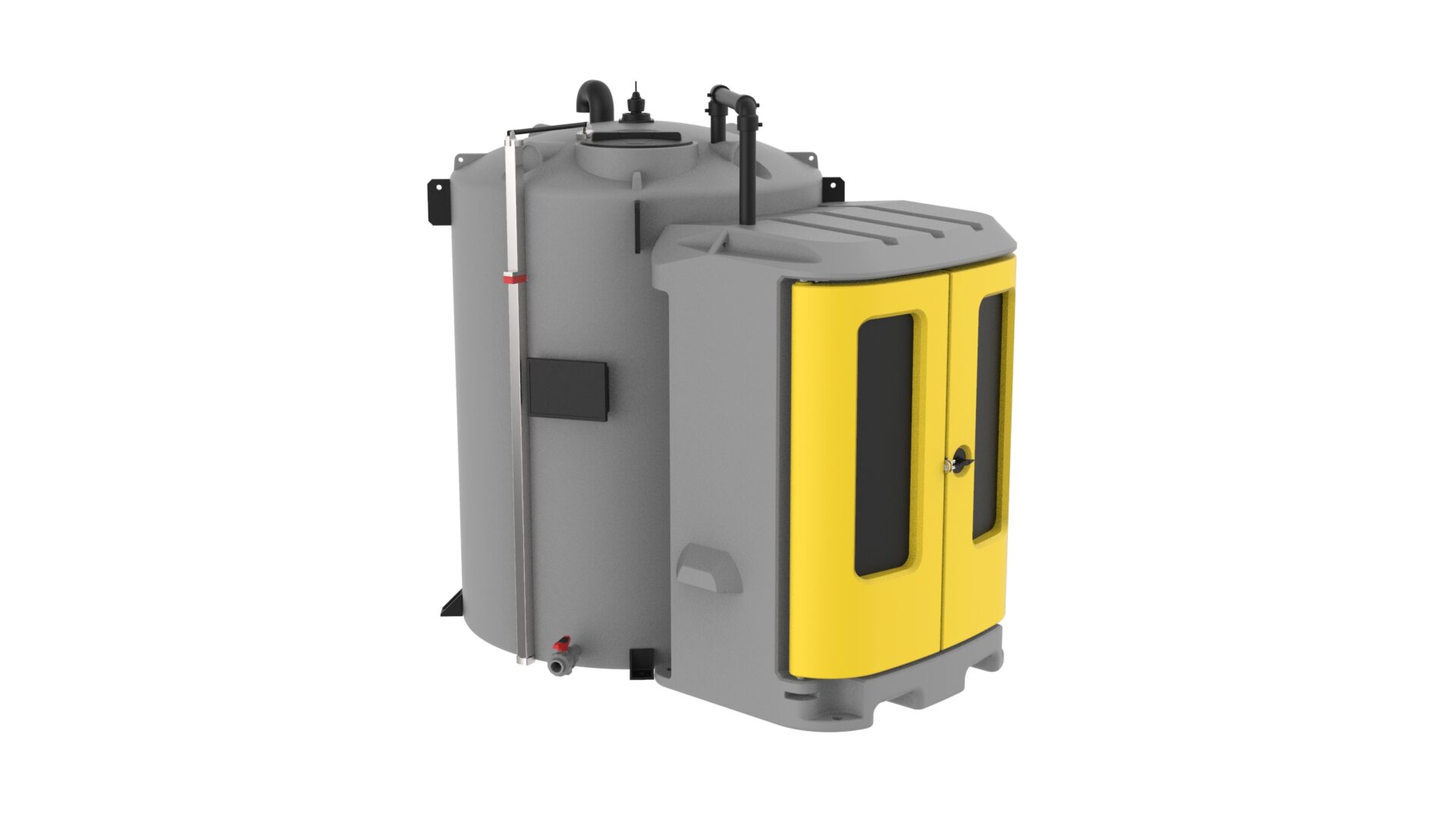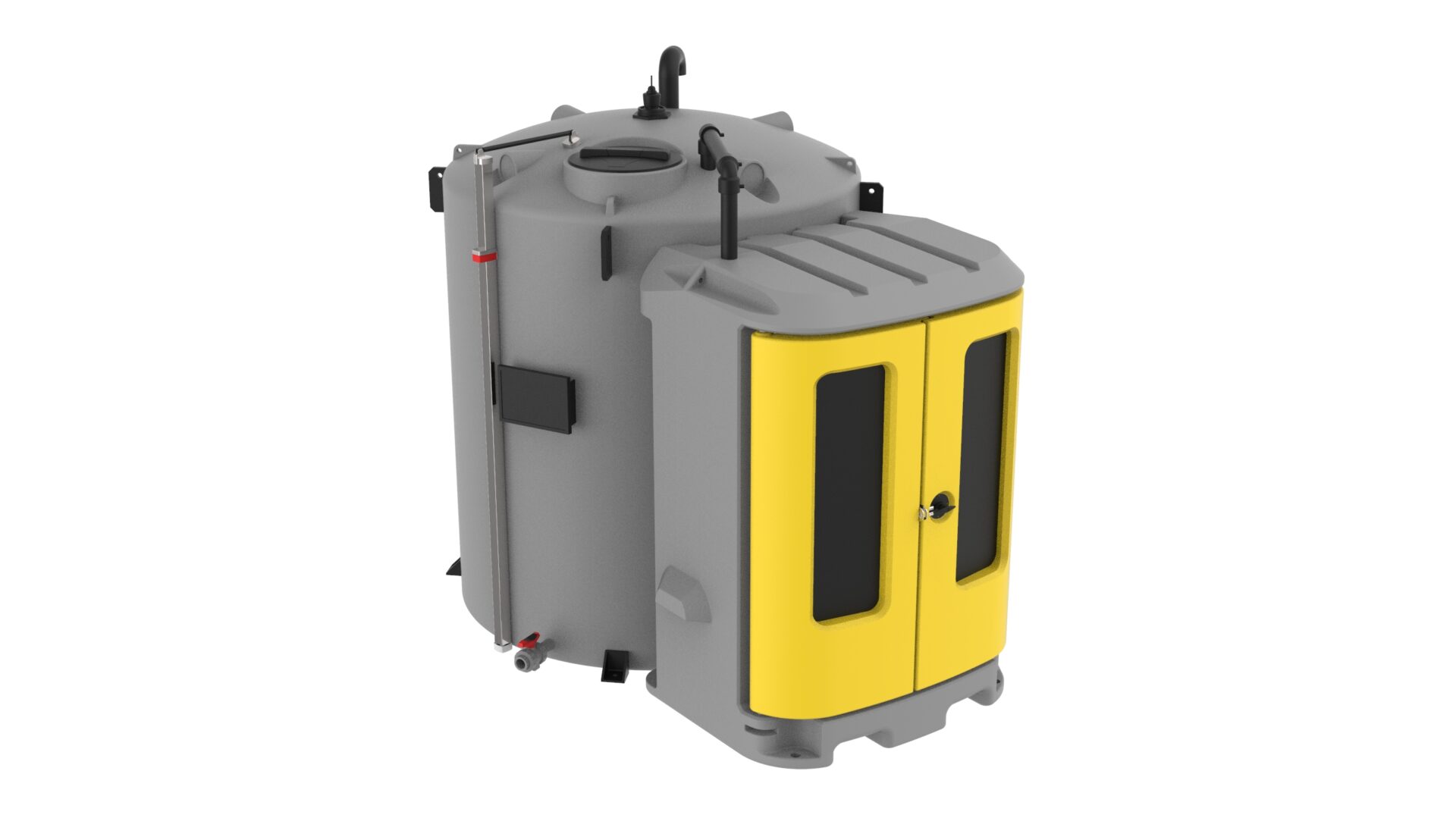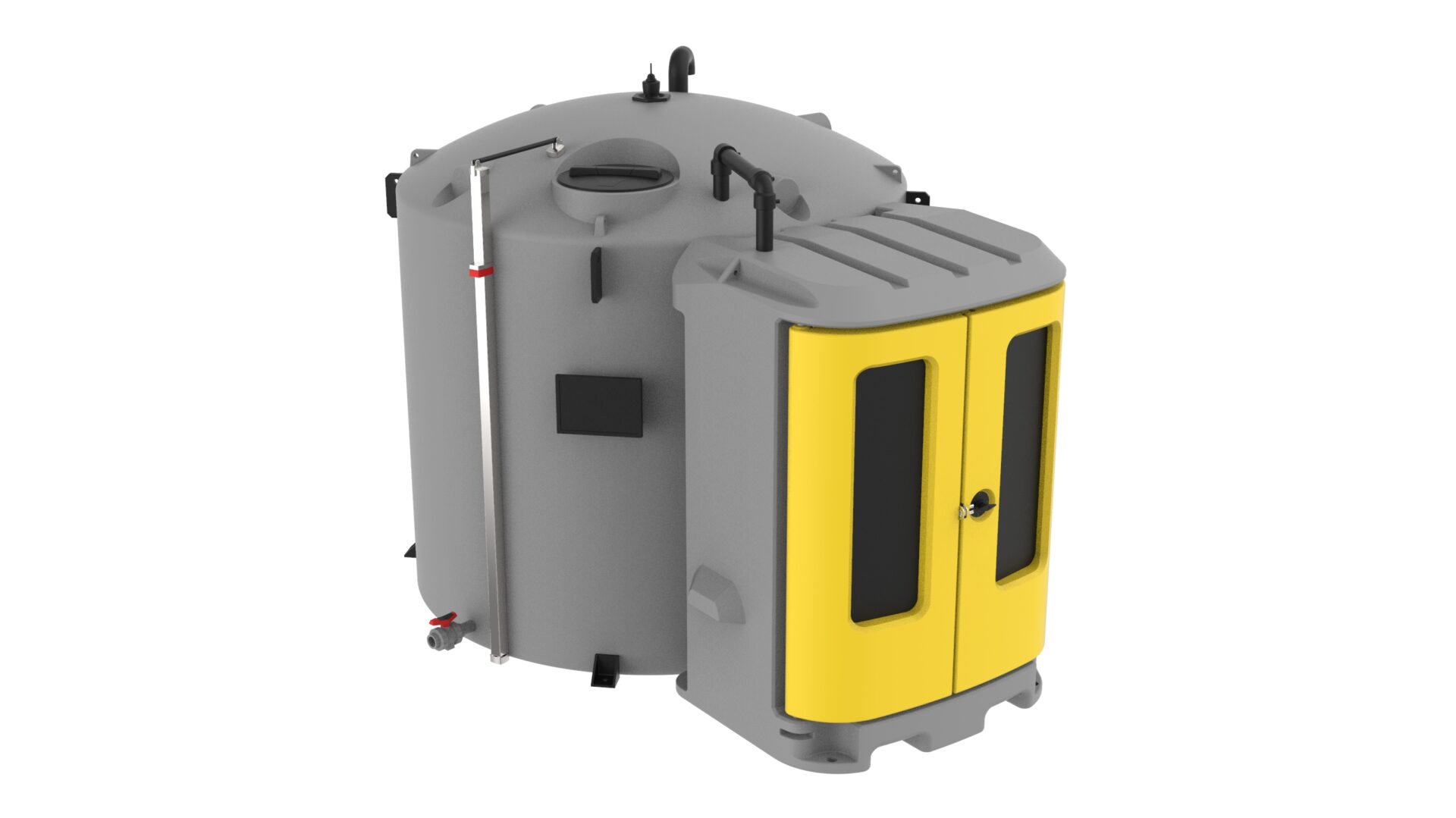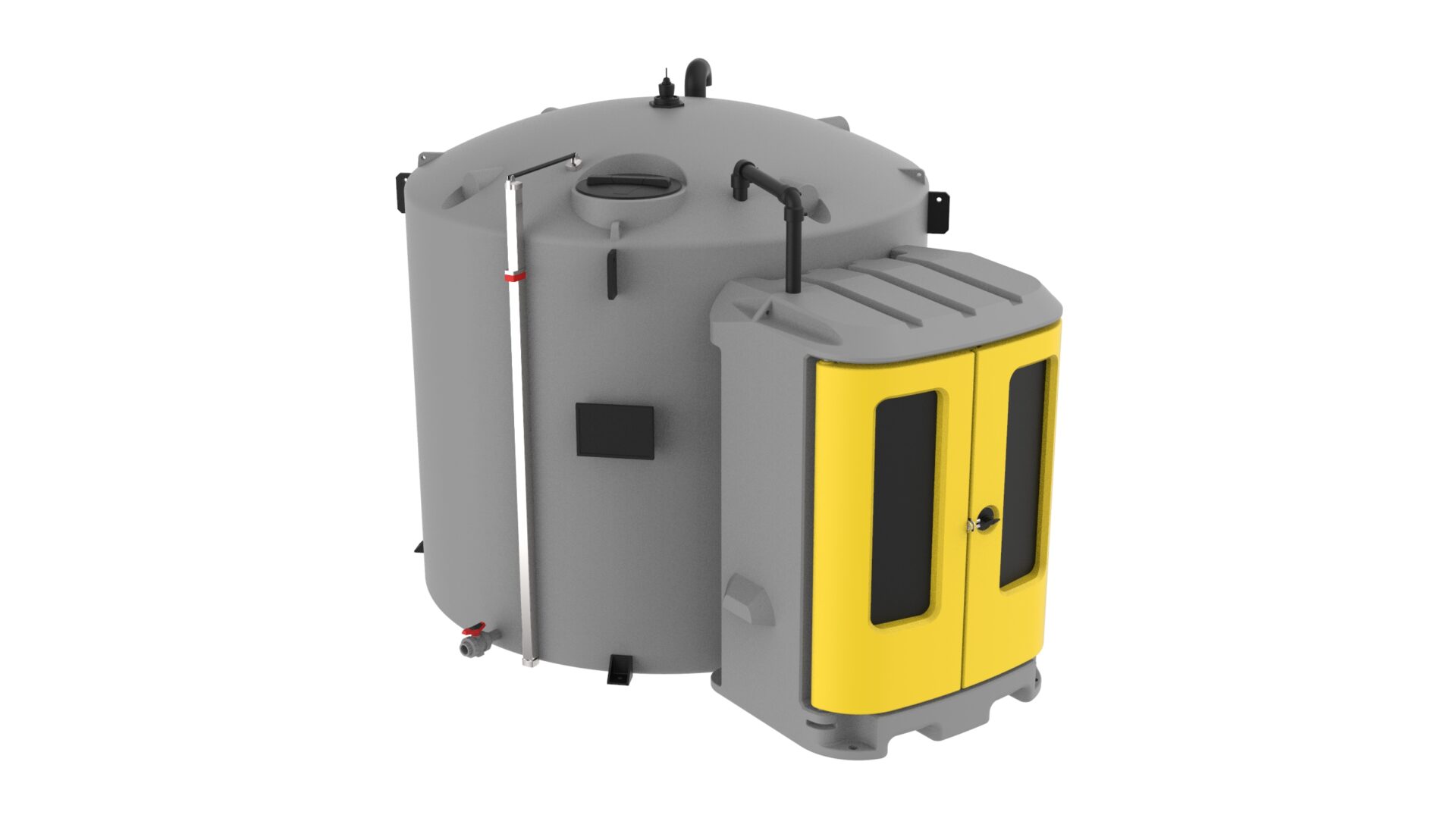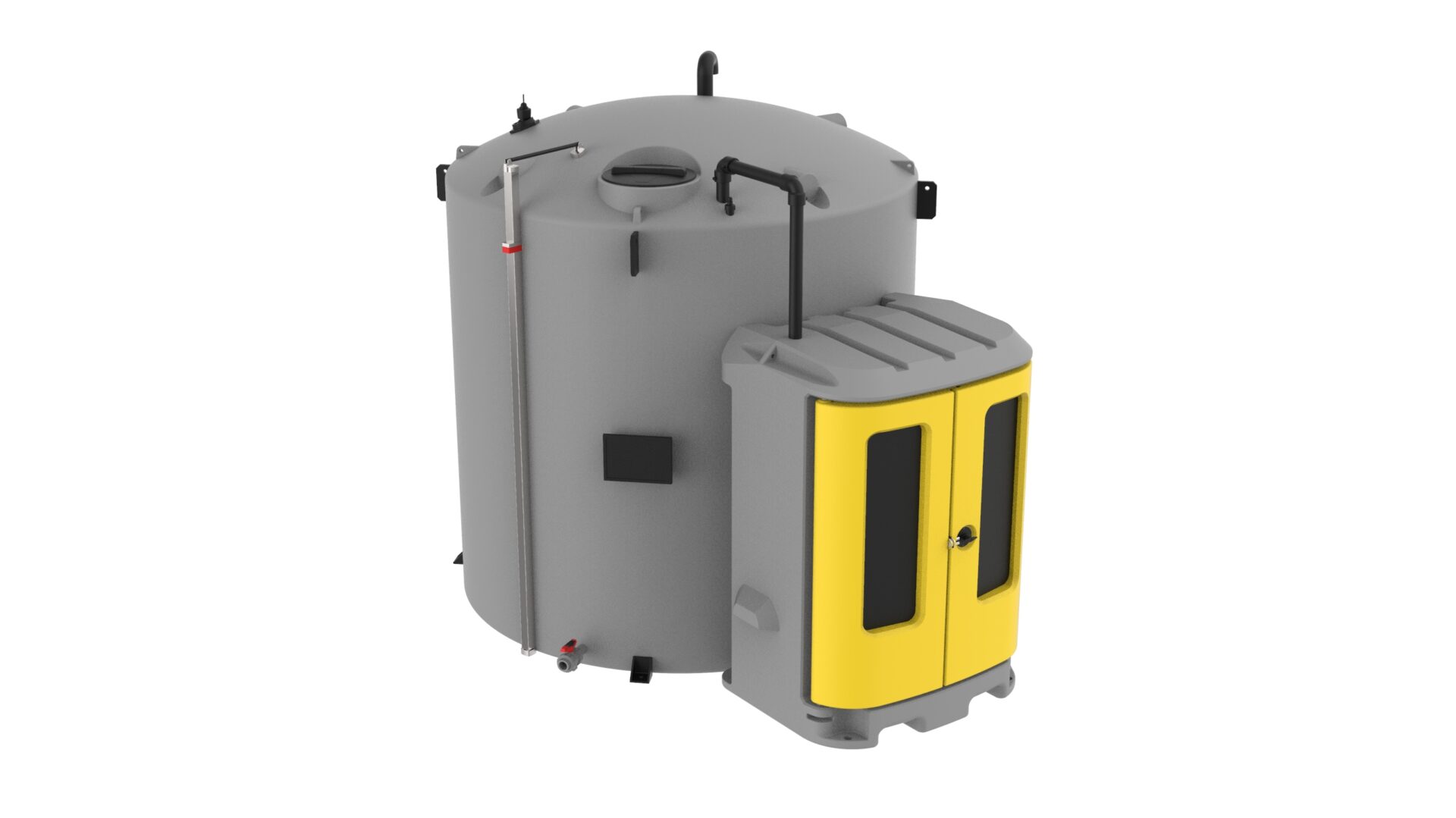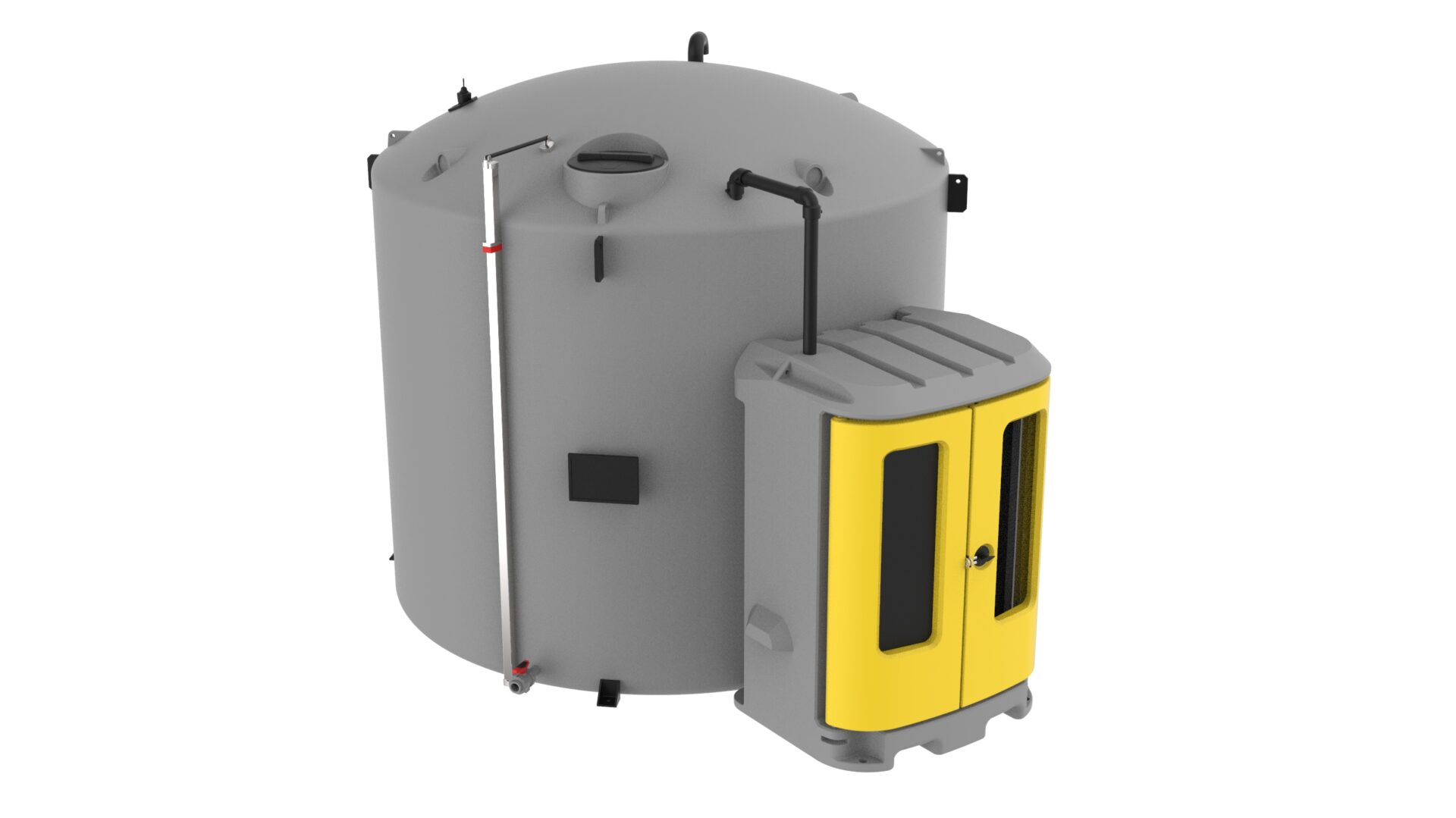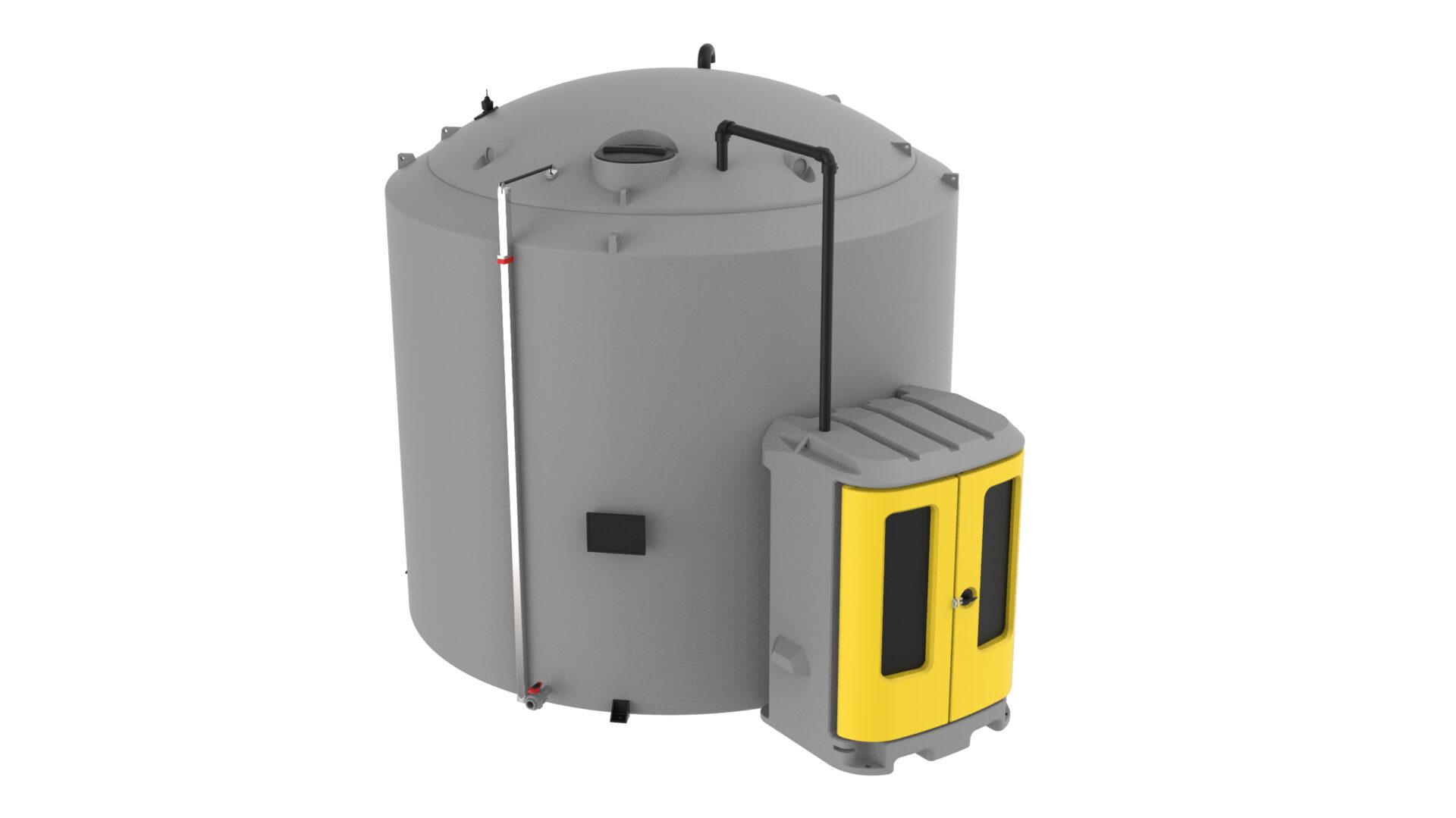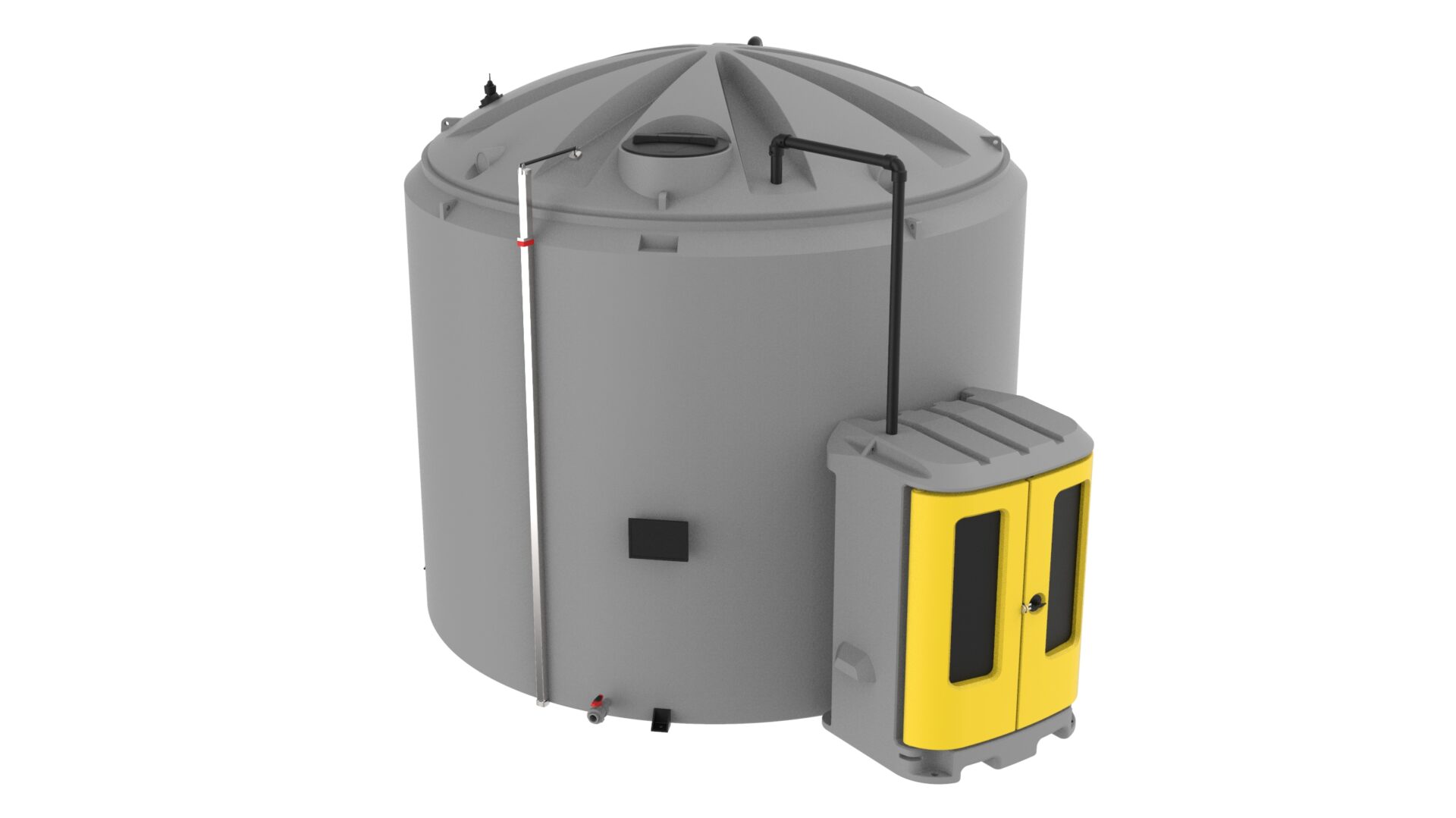1. Overview
What is Sodium Hypochlorite?
Sodium Hypochlorite is a corrosive chemical with the formula name NaClO. It is a powerful oxidizer and is often used as a bleach and a disinfectant. Here at Polymaster, we design and manufacture storage and dosing solutions specifically for sodium hypochlorite, ensuring safe and efficient handling. Our supply tanks for this chemical are used in water treatment plants and various industries.
What material is compatible with Sodium Hypochlorite?
Polyethylene (PE) is a versatile polymer, but not all PE grades are suitable for chemical storage. “Chemical grade” PE is high purity and meets strict standards.
At Polymaster, we ensure the right PE grade for storing sodium hypochlorite. Our unique PE blends are tested for compatibility with over 2,000 chemicals, ensuring a 25-year design life. All our PEs are UV stabilised for outdoor use.
Polymaster’s ‘Chemical Grade (7080/7088)’ PE is fully compatible with sodium hypochlorite, matching its specific gravity. For more details, visit our blog on storing sodium hypochlorite and download our Chemical Compatibility Chart.
2. Chemical Dosing Solutions
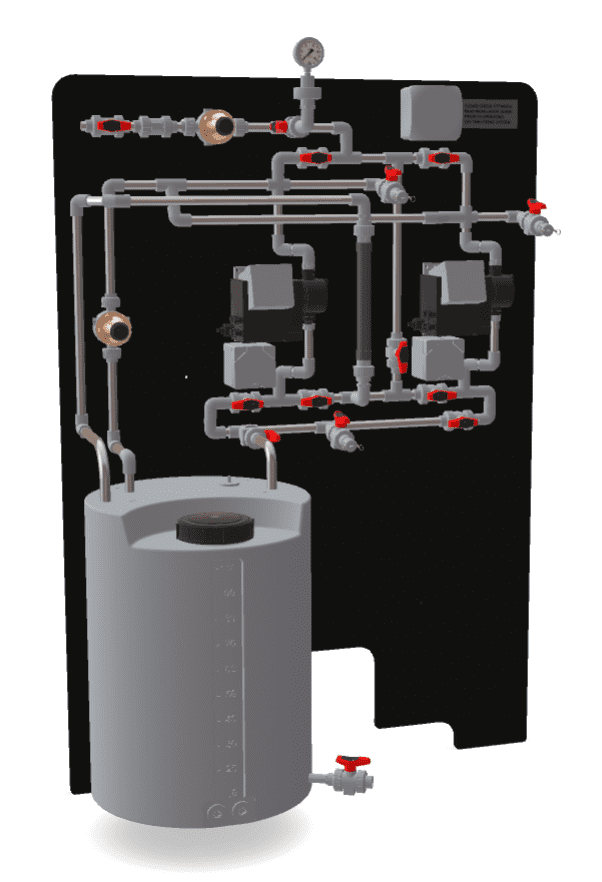
Pre-engineered dosing systems
Our pre-engineered dosing systems are designed for precise and efficient dosing of sodium hypochlorite. These systems are pre-engineered to offer a dosing range which is off-the-shelf and suitable across a wide range of industries. To configure a pre-engineered dosing system suitable for your application, this range offers:
Key Features:
- Pump Arrangements: Duty or Duty/Standby pump arrangements.
- Pump Options: 7.5 LPH @ 16 bar up to 200 LPH @ 4 bar – Grundfos DDA Dosing Pumps.
- Pipework and Valves: +GF+ sch80 pipework and valves.
- Cables and Junction Box: Control Cables and Junction Box.
- Mounting: These dosing systems are typically mounted inside the Double Door Cabinet and can be integrated to the side of a storage tank or standalone.
- Documentation: Detailed drawings, datasheets and step files available for these systems.
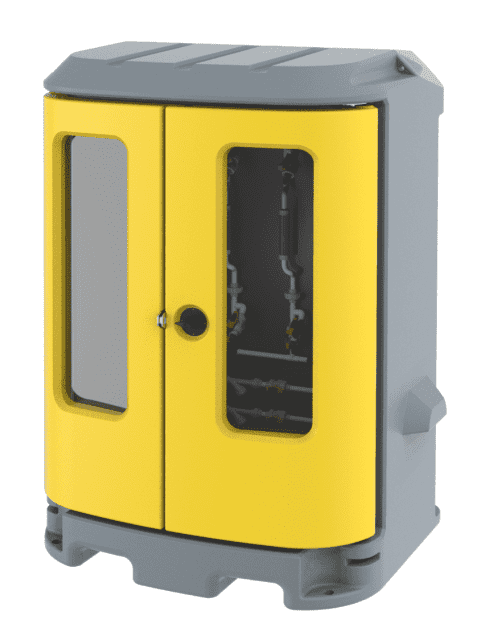
Custom dosing systems
Our custom dosing systems are tailored to meet the unique requirements of your specific applications. Polymaster builds custom dosing systems to match client-supplied P&ID’s and we follow the end-users’ specifications, such as a Water Utilities technical specification.
Key Features:
- Customised Systems: Systems built to your specifications.
- Precision Dosing: Advanced pumps and controls for accurate chemical delivery.
- Integration: Seamless integration with your current processes and systems.
- Safety and Compliance: Designed to meet all relevant standards and end-user specifications.
- Large Systems: We can build large systems for large-scale applications.
3. Chemical Storage Solutions
Tanks for Sodium Hypochloride Storage
CDU 110L/220L
Small chemical storage tanks offer advantages over large storage tanks in terms of flexibility, accessibility, and safety. Their smaller size allows for easier handling and transportation, making them ideal for labs, small-scale industrial operations, and fieldwork where mobility is key.
These tanks are suitable for environments with limited space, allowing convenient storage in confined areas. They also facilitate precise inventory management, reducing the risk of overstocking and chemical waste. They can be easily replaced or cleaned, ensuring better hygiene and reducing cross-contamination.
IBC Storage (1,000L)
Intermediate Bulk Containers (IBCs) are versatile and widely used due to their large capacity and convenient design.
Polymaster’s unique Enclosed IBC Bund solves many of the problems associated with IBC storage and chemical/fluid decanting in a weather-resistant, purpose-built enclosure.
Constructed from high-grade polyethylene, the Polymaster Enclosed IBC Bund allows for easy forklift movement of IBCs in/out, with a simple connection made to a 250 litre day tank, eliminating OH&S issues associated with IBC handling.
Bulk (1,500L - 30,000L)
Large chemical storage tanks offer significant benefits over small tanks in terms of efficiency, cost-effectiveness, and operational capacity. These tanks store substantial volumes of chemicals, reducing the need for frequent refilling and minimising downtime in industrial processes. This efficiency translates to lower storage costs and the ability to purchase chemicals in bulk at discounted rates.
Large tanks also centralise storage, simplifying inventory management and logistics while ensuring a continuous supply of necessary chemicals.
Accessories for Sodium Hypochloride storage
Accessories give you the ability to decanter, store, mix and dispense with ease. We ensure you have a safe and effective solution for storing and dosing aggressive chemicals.

Dosing Skids
Polymaster has a dosing skid that can assist to control the flow rate of Sodium Hypochlorite used to treat the water within any water treatment set-up.

Cabinets
Chemical Dosing Systems – made easy at Polymaster for all applications, with flexible dosing options available ranging from a stand alone cabinet to a complete package.
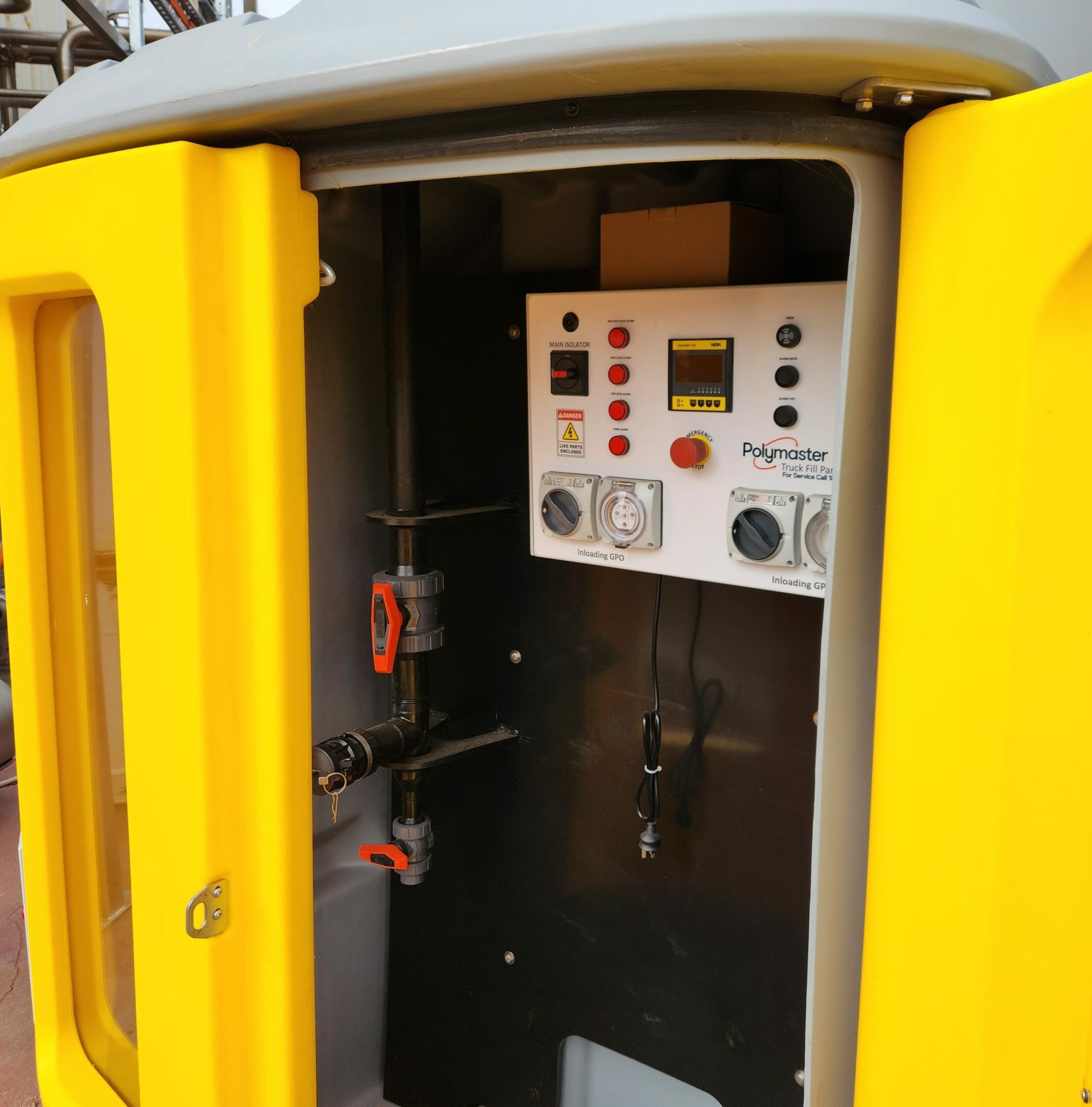
Chemical Fill Stations
Polymaster’s chemical filling stations offer a safe and efficient solution for unloading Sodium Hypochlorite. Designed for ease of use, these panels ensure secure and controlled chemical transfer.
4. Case Studies
Upgrading the Dungong Wastewater Treatment Plant
Find out how Polymaster was involved in the completion of a $28 million upgrade project to improve Dungong’s water quality.
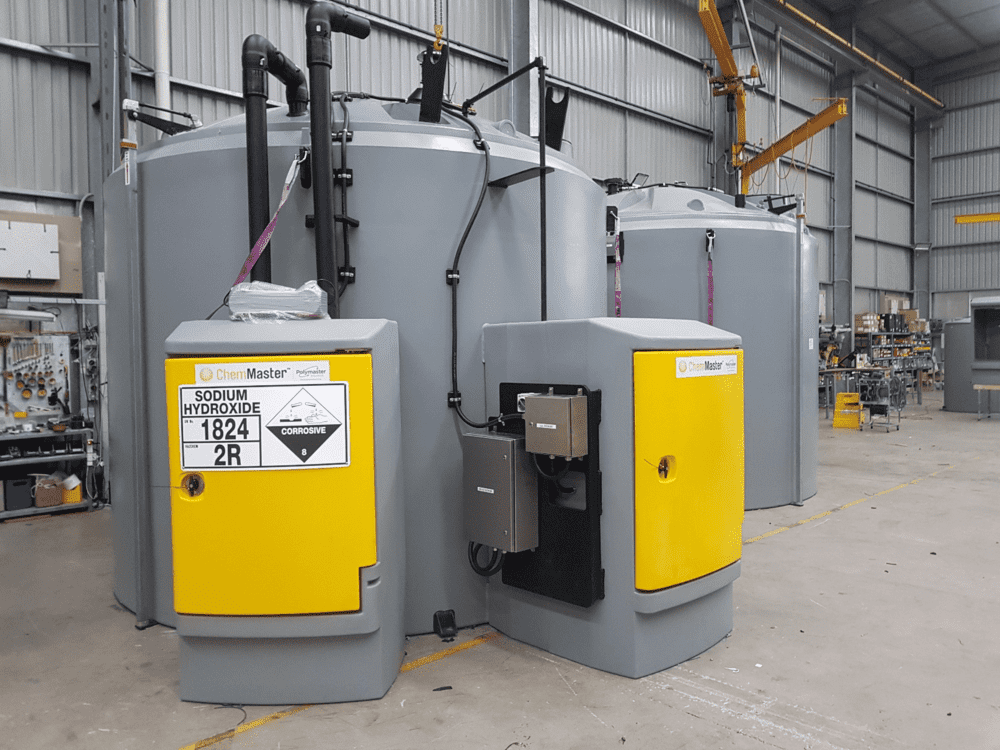
5. Applications
What are the applications for sodium hypochlorite?
Sodium hypochlorite (NaOCl) is a versatile chemical with a wide range of applications across various industries. Here are some of its primary uses:
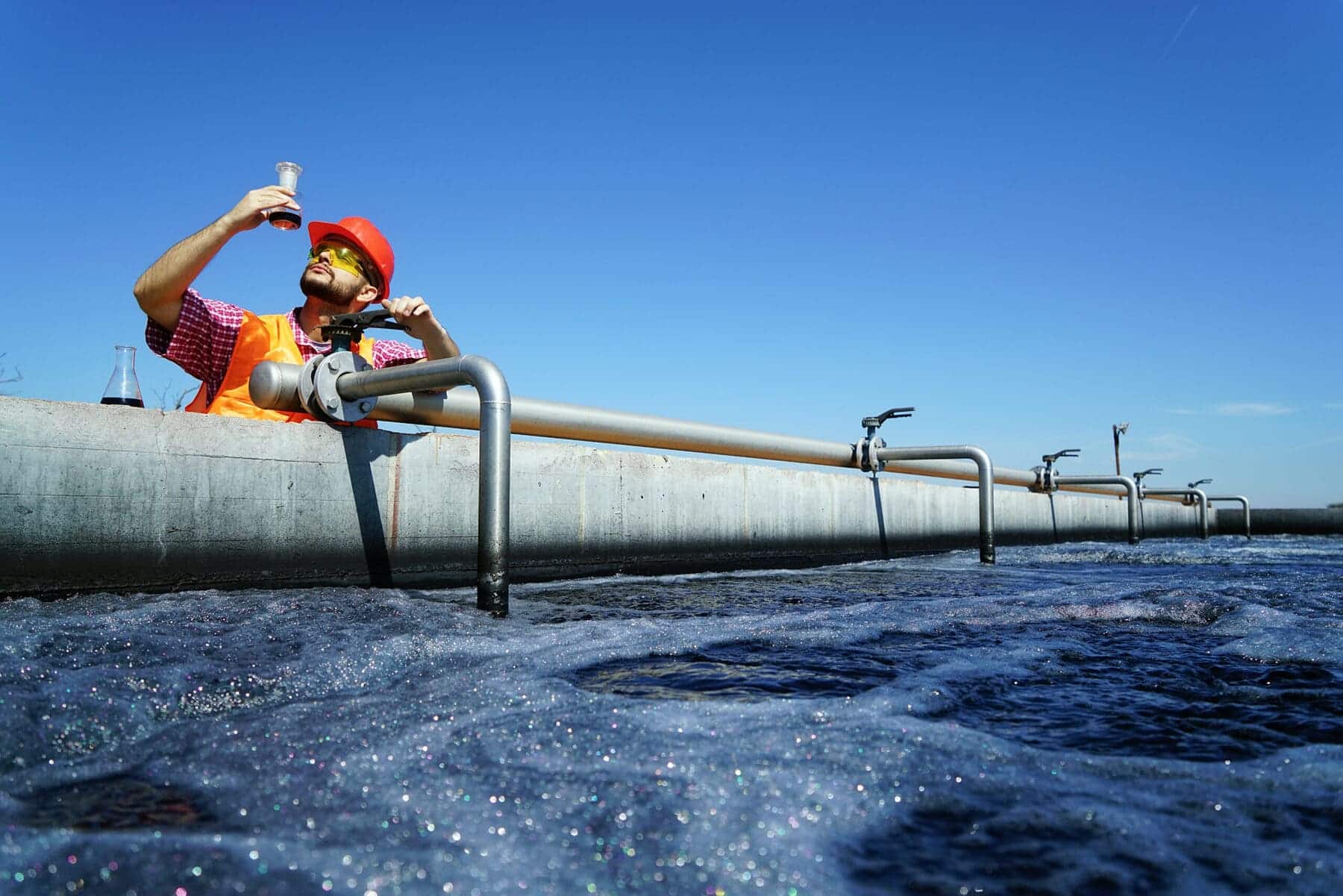
Clean In Place
In the water treatment industry Sodium hypochlorite is used to purify and disinfect water. It eliminates harmful microorganisms, such as bacteria, viruses, and parasites. When Sodium Hypochlorite is added to water it starts a process called chlorination.
Learn more about Clean In Place6. FAQ
- Use containers made of compatible materials, such as our 7080 chemical grade to store sodium hypochlorite.
- Store sodium hypochlorite separately from other chemicals, particularly acids, which can react with it and cause dangerous reactions.
- Ensure that sodium hypochlorite containers are tightly sealed and labelled with the proper hazard warnings.
- Regularly inspect and check your tank for any signs of damage or wear that may occur and get them repaired immediately.
- Use appropriate PPE: When handling sodium hypochlorite, always use personal protective equipment (PPE) such as gloves, goggles, and face shields to prevent skin and eye contact.
- Avoid inhalation: Avoid inhaling fumes or vapours from sodium hypochlorite as they can cause respiratory irritation and other health issues.
- Handle with care: Handle sodium hypochlorite carefully to avoid splashing or spilling. Ensure the work area is well-ventilated to disperse any fumes.
- Proper mixing: Do not mix sodium hypochlorite with other chemicals unless you are certain of the reaction outcomes. Mixing with acids or ammonia can produce toxic gases.
- Emergency procedures: Have emergency procedures in place in case of accidental exposure or spillage. This includes having eyewash stations and showers nearby and knowing how to neutralise spills safely.
- Acids: Storing sodium hypochlorite with acids can lead to the release of chlorine gas, which is highly toxic.
- Ammonia: Mixing sodium hypochlorite with ammonia or ammonium compounds produces chloramines, which are toxic gases.
- Metals: Avoid storing sodium hypochlorite with metals such as iron, copper, nickel, and chromium, as it can cause corrosion and produce harmful gases.
- Organic materials: Organic materials such as solvents or fuels can react with sodium hypochlorite, leading to the risk of fire or explosion.
- Reducing agents: Chemicals that are reducing agents can react violently with sodium hypochlorite, potentially causing dangerous reactions.
- Temperature control: Store sodium hypochlorite at a stable, cool temperature to prevent decomposition and maintain its effectiveness.
- Light exposure: Keep sodium hypochlorite away from direct sunlight and ultraviolet light, as exposure can degrade the chemical.
- Spill containment: Use secondary containment systems to capture any spills or leaks and prevent environmental contamination.
- Training: Ensure all personnel handling sodium hypochlorite are properly trained in its safe use and emergency response procedures.
7. Resources

This Chemical Compatibility Chart provides a comparison of the chemical resistance of our Specialty Grades of Linear Low Density Polyethylene, High Density Polyethylene and Polypropylene Polymers in different chemical environments.
Download The Chart
Need storage for your Sodium Hypochlorite? You can check another blog of ours that highlights 4 key reasons why Sodium Hypochlorite should be stored in a chemical tank and not just a poly rainwater tank.
Read the Article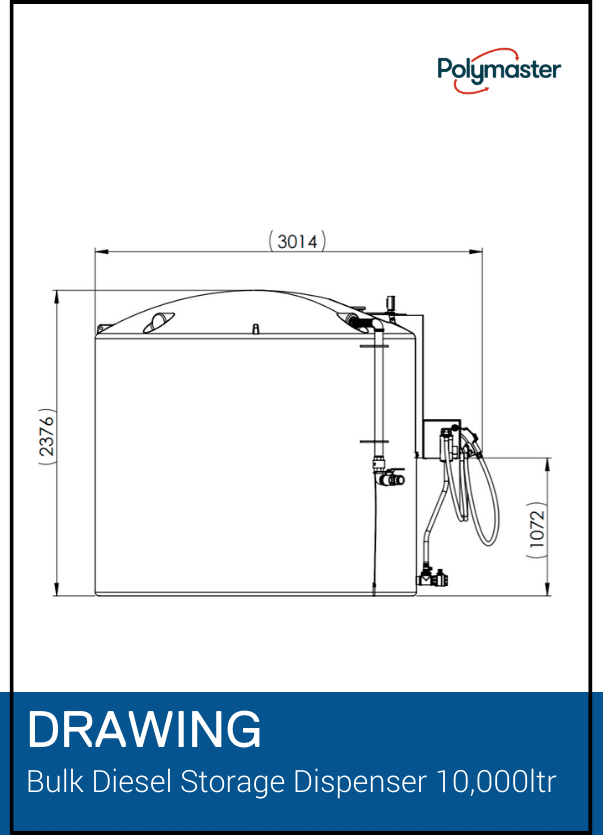
We also have additional resources available on all our chemical tanks, including;
- GA/PDF drawings for all tanks.
- Step files to easily incorporate into your CAD files.
- Datasheets on each tank, including different SG and Chemical Grade materials.
Make An Enquiry

